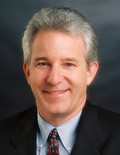Revisiting Heights in Midtown -- and Elsewhere
Next Monday night (7/21), the City Council will embark on a new experiment -- a monthly meeting devoted exclusively to planning matters. Under some revisions we made a couple of months ago, we now deal with general city business on the first and third Mondays of the month and planning matters exclusively on the second Monday. We also meet earlier -- at 6 pm. We are going to try to take the fourth Monday off. Good luck.
In keeping with the spirit of the new planning-only meeting, Councilmember Ed Summers and I have placed two items on next Monday's agenda dealing with building heights.
The first is a further refinement of building heights in the interior residential neighborhoods in Midtown, placing additional conditions on buildings over 30 feet.
The second is an attempt to deal with the overall citywide height and view issues - which have been brought into focus by the VCORD initiative, now schedule for the ballot in November 2009 -- by creating a city task force to make recommendations for the City Council to consider.
Midtown Residential Building Heights
In some parts of Midtown, it is possible to build 40- to 45-foot residential buildings in the middle of residential neighborhoods. Until 2006, these "2 1/2" story buildings could be approved over the counter. We now require planning commission review for such projects.
The first proposal from Councilmember Summers and I for Monday night would place further restrictions on these essentially 3-story buildings. Under our proposal, buildings would be limited to 3o feet high unless the upper stories are set back further than the ground floor.
This doesn't solve all problems associated with tall buildings in Midtown, but at least it should mean that residential buildings in residential neighborhoods are more compatible with their surroundings. The proposal doesn't affect the heights of buildings along the Main and Thompson corridors, which are subject to a new code we passed alst year. Under that code, the upper floords of these buildings already must be set back 30 feet from back property lines.
View Protection Task Force
The second proposal from Councilmember Summers and I would create a "Public Viewshed and Solar Access" task force charged with providing the City Council with a set of recommendations for how to protect viewsheds and solar access.
This proposal was inspired by the VCORD initiative, which has qualified for the ballot for November of 2009. The VCORD initiative would impose a temporary 26-foot height limit in most parts of town and create a "View Resources Board" charged with drafting a view protection ordinance.
I have a hard time supporting the VCORD initiative, for two reasons. First, I don't think a moratorium on buildings over 26 feet is necessary, especially in a real estate downturn. And second, I can't support the manner in which the View Resources Board members are appointed. Under the initiative, these members would be appointed by VCORD -- a civic-minded but nevertheless private organization -- meaning that these appointments would be beyond the reach of the voters.
Nevertheless, VCORD's efforts have highlighted an important public issue -- how do we protect views from public places, and solar access to people's property, as we allow greater densities in certain parts of the city? VCORD's initiative admirably couches its provisions as an effort to implement the 2005 General Plan's provisions that public viewsheds and solar access should be protected. VCORD gathered more than 7,000 valid signatures for its initiative -- enough to qualify for the next municipal election in November of 2009, but not enough to qualify for the general election ballot this fall.
Even though I cannot agree with all the provisions of VCORD's initiative, I believe we should start the process of figuring out how to implement the General Plan's call to protect public viewsheds and solar access sooner rather than later. Therefore, our proposal would create a task force that is similar to the proposed VCORD committee and charge that task force with coming up with recommendations to the City Council no later than next February. Presumably this would permit us to adopt those recommendations next spring, and then voters can decide in fall whether we have done a good enough job or whether they still want to vote in favor of the VCORD initiative.
There are two major differences between our proposal and the VCORD initiative, baesd on the two areas of disagreement between some councilmembers and VCORD. The first is that our proposal does not call for a temporary height limit, as the VCORD initiative does. The second is that the task force would be appointed by the City Council, which is directly accountable to the voters; rather than by VCORD, which is not directly accountable to the voters.
Our proposal calls for an 11-member task force including the following members:
-- 3 representatives who served on either the Seize The Future Citizen Outreach Committee (the “Vision Committee”) or the Comprehensive Plan Advisory Committee (the CPAC), not to include any current members of the City Council or the Planning Commission.
-- 1 representative nominated by the Chamber of Commerce.
-- 1 representative nominated by the Visitor and Convention Bureau
-- 1 representative nominated by the City’s environmental organizations.
-- 1 representative nominated by the Ventura Citizens Organized for Responsible Development (VCORD)
-- 2 representatives from each of the three neighborhoods scheduled to have Community Plans prepared in the foreseeable future (Saticoy & Wells, Westside, and Midtown), including 1 representative nominated by the local Community Council and 1 business owner.
-- 2 members appointed at large.
Our proposal also specifies that all meetings of this task force will be publicly noticed meetings open to the public.
